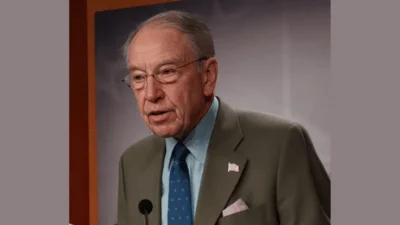The Congressional Record is a unique source of public documentation. It started in 1873, documenting nearly all the major and minor policies being discussed and debated.
“REMOVAL OF INJUNCTION OF SECRECY--TREATY DOCUMENT NO. 105-5” mentioning the U.S. Dept of State was published in the Senate section on pages S2799-S2800 on April 7, 1997.
The publication is reproduced in full below:
REMOVAL OF INJUNCTION OF SECRECY--TREATY DOCUMENT NO. 105-5
Mr. NICKLES. Mr. President, as in executive session, I ask unanimous consent that the injunction of secrecy be removed from the following treaty transmitted to the Senate on April 7, 1997, by the President of the United States: The Flank Document Agreement to the CFE Treaty, Treaty Document No. 105-5.
I further ask unanimous consent that the treaty be considered as having been read for the first time; that it be referred, with accompanying papers, to the Committee on Foreign Relations and ordered to be printed; and that the President's message be printed in the Record.
The PRESIDING OFFICER. Without objection, it is so ordered.
The message of the President is as follows:
To the Senate of the United States:
I transmit herewith, for the advice and consent of the Senate, the Document Agreed Among the States Parties to the Treaty on Conventional Armed Forces in Europe (CFE) of November 19, 1990, which was adopted at Vienna on May 31, 1996 (``the Flank Document''). The Flank Document is Annex A of the Final Document of the first CFE Review Conference.
I transmit also, for the information of the Senate, the report of the Department of State on the Flank Document, together with a section-by-
section analysis of the Flank Document and three documents associated with it that are relevant to the Senate's consideration: the Understanding on Details of the Flank Document of 31 May 1996 in Order to Facilitate its Implementation; the Exchange of Letters between the U.S. Chief Delegate to the CFE Joint Consultative Group and the Head of the Delegation of the Russian Federation to the Joint Consultative Group, dated 25 July 1996; and the Extension of Provisional Application of the Document until May 15, 1997. I take this step as a matter of accommodation to the desires of the Senate and without prejudice to the allocation of rights and duties under the Constitution.
In transmitting the original CFE Treaty to the Senate in 1991, President Bush said that the CFE Treaty was ``the most ambitious arms control agreement ever concluded.'' This landmark treaty has been a source of stability, predictability, and confidence during a period of historic change in Europe. In the years since the CFE Treaty was signed, the Soviet Union has dissolved, the Warsaw Pact has disappeared, and the North Atlantic Alliance has been transformed. The Treaty has not been unaffected by these changes--for example, there are 30 CFE States Parties now, not 22--but the dedication of all Treaty partners to achieving its full promise is undiminished.
The CFE Treaty has resulted in the verified reduction of more than 50,000 pieces of heavy military equipment, including tanks, armored combat vehicles, artillery pieces, combat aircraft, and attack helicopters. By the end of 1996, CFE states had accepted and conducted more than 2,700 intrusive, on-site inspections. Contacts between the military organizations charged with implementing CFE are cooperative and extensive. The CFE Treaty has helped to transform a world of two armed camps into a Europe where dividing lines no longer hold.
The Flank Document is part of that process. It is the culmination of over 2 years of negotiations and months of intensive discussions with the Russian Federation, Ukraine, our NATO Allies, and our other CFE Treaty partners. The Flank Document resolves in a cooperative way the most difficult problem that arose during the Treaty's first 5 years of implementation: Russian and Ukrainian concerns about the impact of the Treaty's equipment limits in the flank zone on their security and military flexibility. The other Treaty states--including all NATO Allies--agreed that some of those concerns were reasonable and ought to be addressed.
The Flank Document is the result of a painstaking multilateral diplomatic effort that had as its main goal the preservation of the integrity of the CFE Treaty and achievement of the goals of its mandate. It is a crucial step in adaptation of the CFE Treaty to the dramatic political changes that have occurred in Europe since the Treaty was signed. The Flank Document confirms the importance of subregional constraints on heavy military equipment. More specifically, it revalidates the idea, unique to CFE, of limits on the amount of equipment particular nations in the Treaty area can locate on certain portions of their own national territory. Timely entry into force of the Flank Document will ensure that these key principles are not a matter of debate in the negotiations we have just begun in Vienna to adapt the CFE Treaty to new political realities, including the prospect of the enlarged NATO.
I believe that entry into force of the CFE Flank Document is in the best interests of the United States and will contribute to our broader efforts to establish a new European security order based on cooperation and shared goals. By maintaining the integrity of the CFE flank regime, we take a key step toward our goal of ensuring that the CFE Treaty continues to play a key role in enhancing military stability into the 21st century. Therefore, I urge the Senate to give early and favorable consideration to the Flank Document and to give advice and consent prior to May 15, 1997.
William J. Clinton.
The White House, April 7, 1997.
____________________








